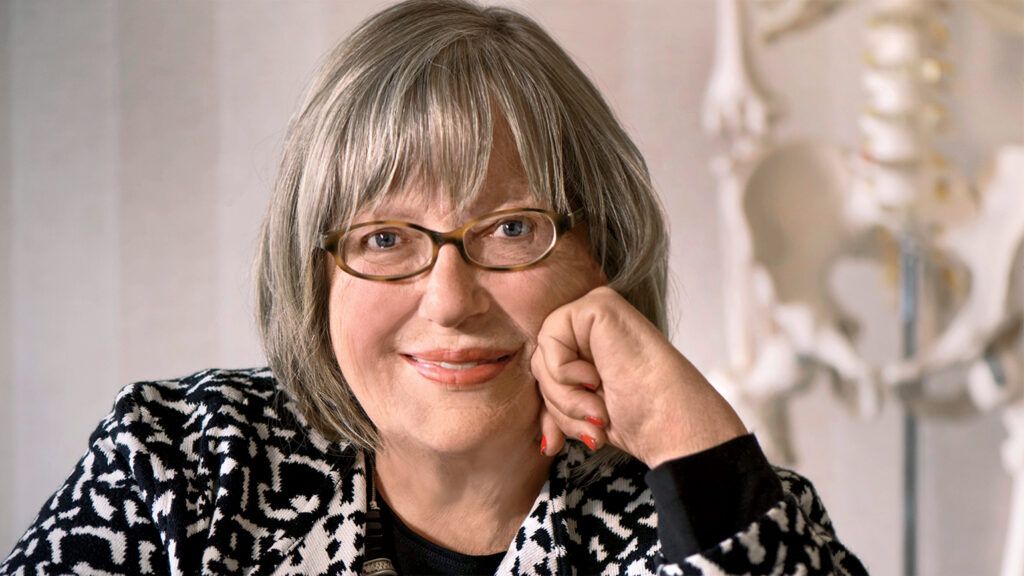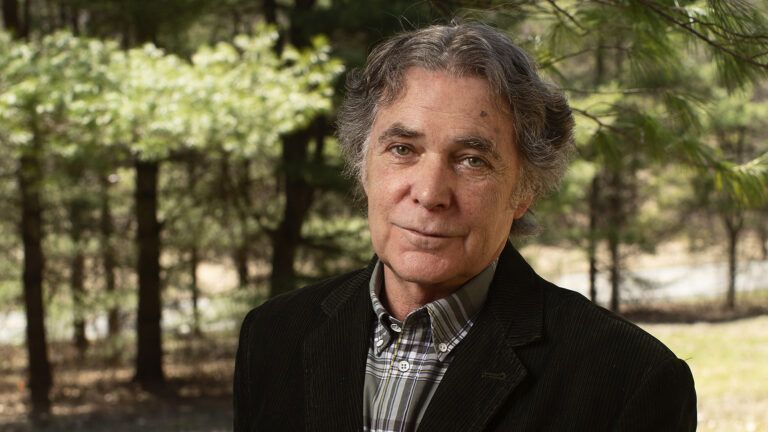A fiery pain shot down my left leg as I struggled to change from my exam gown into leggings. It made me want to scream. But the conversation outside the X-ray dressing room door was almost as troubling. “This scoliosis is severe,” I heard my chiropractor say. “It’s likely causing her sciatica.”
For months, I had trekked from specialist to specialist in search of the cause of my sciatica. I’d asked if it could be related to the scoliosis that had been diagnosed back when I was in grade school.
Finally someone listened, and I had my answer. The whole thing was caused by my neurofibromatosis, the genetic condition that had caused painful tumors to grow throughout my body and skeletal abnormalities like the scoliosis.
How could this be? In 2018, God had delivered me from 63 years of agony from neurofibromatosis, including a two-decade dependence on prescription OxyContin. Gone for good was the Roberta for whom pain and uncertainty had driven every decision. I was stunned at my brand-new life. Overjoyed.
In three years, I hadn’t so much as ingested an aspirin for pain relief. I’d tapered off all 14 of my meds. Not one expert had a name for what had happened, only that my brain had somehow reprogrammed itself after those opioids stopped.
Even retired from a 42-year nursing career, I didn’t need a fancy medical term. It was a bona fide miracle. If God could change all that, this back thing would be a cinch. In one fell swoop, he’d take away the pain again…wouldn’t he?
But with this sciatica, God seemed silent. I did all I knew to do to push through the pain. Torturous physical therapy exercises. Daily walks. I recited Scripture and positive affirmations. Tried heat and ice, deep breathing, visualization, massage therapy, acupressure.
When these measures failed, a provider suggested opioids. Never again! I couldn’t, I wouldn’t, go back to that. Once more my body had betrayed me. I wondered if God had too.
I tried to keep busy, but I couldn’t sit, walk or even lie down without that shooting, burning pain. Then the pandemic hit. The isolation and uncertainty of Covid disconnected me from everyone and everything I cared about. Especially my faith.
You can’t be serious, I practically snarled at God. You gave me a new life, only to have it whisked away?
My leg and foot grew weak and numb. I stopped doing my PT exercises and daily walks on my country road. With the loss of feeling, I couldn’t chance stepping on a stone and losing my balance. A fall might mean a broken bone, a wheelchair or worse.
When a new clinician jokingly diagnosed my condition as TMB—“too many birthdays”—I was heartsick. Although as a traditionally trained nurse I’d been a bit leery of chiropractic medicine, I finally made an appointment with a chiropractor a friend had recommended. I was desperate.
The evening before my consultation, a man telephoned, introducing himself as the chiropractor. Dr. Perry asked how I was doing, then added, “I look forward to hearing about your life, Roberta. So we can work together to make you better.”
This was different. I’d been a lifelong patient with excellent providers. Still, health care had been done to me and for me. Never with me.
At my appointment, Dr. Perry illustrated everything using a model of the spine. He theorized that the incorrect medication dosage I’d been given while tapering off my meds had likely set my sciatic pain in motion.
I’d gained 65 pounds in a matter of months, which put pressure on that nerve. Then I’d become profoundly anemic, so less oxygen went to my tissues. Fatigue and shortness of breath had led me to spend more time in bed, the immobility further weakening my back muscles.
With all I had working against me, I was terrified of what the future would bring. But Dr. Perry’s voice and eyes spoke of possibility. “If we can manipulate your spine just a couple of millimeters,” he said, “it should clear your sciatic nerve. I believe you’ll be out of pain.”
It was then that I caught a snippet of a tune coming from his radio. “That song!” I blurted out. “It used to help me feel better.” Dr. Perry and I listened to the words: For the God on the mountain is still God in the valley….
The lyrics moved him as much as they did me. A single tear slipped down and dampened his mask. In the most sacred moment of all my years in health care, I heard Dr. Perry say softly, “I cannot cure you. But I will care for you.”
Before he performed my first spinal adjustment, Dr. Perry said, “You are fearfully and wonderfully made, Roberta.” With due respect to the Psalms, he couldn’t possibly mean me. Had he forgotten my very genes were defective? About the 37 surgeries for removing the tumors I was as programmed to have as my blue eyes?
I figured fearfully made sense—I’d lived from fear to fear most of my life—but wonderfully? Still, Dr. Perry made such an impression on me that I read up on the verse when I got home. I discovered that in Hebrew, yare, the word we translate as “fearfully,” means “with reverence and respect.” The way Dr. Perry was treating me. The doubt in my spirit shifted, making room for hope.
Within a few weeks, my pain was gone. The weakness and numbness in my leg and foot soon left too. In the past, I’d bounced from crisis to crisis, necessitating medical intervention. This healing took a different course.
As Dr. Perry promised, it wasn’t about a cure but about care. Taking care of myself meant adopting some lifestyle changes. Daily strengthening exercises for my back. A commitment to walking and good nutrition. In the past, desperate to lose weight, I’d been consuming less than a thousand calories a day. My body had kicked into starvation mode.
A consult with a clinical dietitian revealed I needed to consume more calories in order to reset my metabolism and lose weight. When I ate the right things, I had more vitality and energy. The absence of pain made it easier to exercise, and I began losing a pound a week.
I’d never discussed lifestyle changes with a provider before. With every treatment, I felt better and better. I began to wonder if sciatica had also been part of a divine plan. One that would ultimately make me healthier, stronger.
Sometimes life’s nos can be God’s yeses. A treatment modality I would have never considered connected me to something I’d overlooked during four decades of nursing: Our bodies are designed to participate in our own healing. When I found a provider who respected and valued the body I’d been given, I no longer focused on its deficits.
The approach was so healing that I committed to doing everything I could to move my body toward wellness. And I felt more at one than ever with the God who’d created that body.
There’s a verse in Ecclesiastes that says a cord of three strands is not easily broken. I’d always thought of those words in regard to a marriage or a friendship. But they also describe health care at its finest, where a provider and a patient work together toward a common goal, with God the central strand. It’s a can’t-fail approach to being the healthiest I can be.
For more inspiring stories, subscribe to Guideposts magazine.





